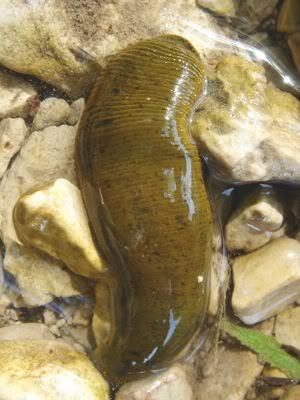
Leeches are annelids comprising the subclass Hirudinea. There are freshwater, terrestrial and marine leeches. Like their near relatives, the Oligochaeta, they share the presence of a clitellum. Like earthworms, leeches are hermaphrodites. The medicinal leech, Hirudo medicinalis, which is native to Europe, and its congeners have been used for clinical bloodletting for thousands of years.
All leech species are carnivorous. Some are predatory, feeding on a variety of invertebrates such as worms, snails, insect larvae, crustaceans, while a very few are haemophagic parasitic blood-sucking leeches, feeding on the blood of vertebrates such as amphibians (frogs, reptiles, etc.), waterfowl, fish, and mammals (including humans). The most important predators on leeches are fish, aquatic insects, crayfish and other leeches specialized for predation on leeches.
Haemophagic leeches attach to their hosts and remain there until they become full, at which point they fall off to digest. Leeches' bodies are composed of 34 segments. They all have an anterior (oral) sucker formed from the last six segments of their body, which is used to connect to a host for feeding, and are known to release an anaesthetic to remain unnoticed by the host. They use a combination of mucus and suction (caused by concentric muscles in those six segments) to stay attached and secrete an anti-clotting enzyme into the host's blood stream.
i feel so spineless
Some species of leech will nurture their young, providing food, transport, and protection, which is unusual behavior in an invertebrate
No comments:
Post a Comment